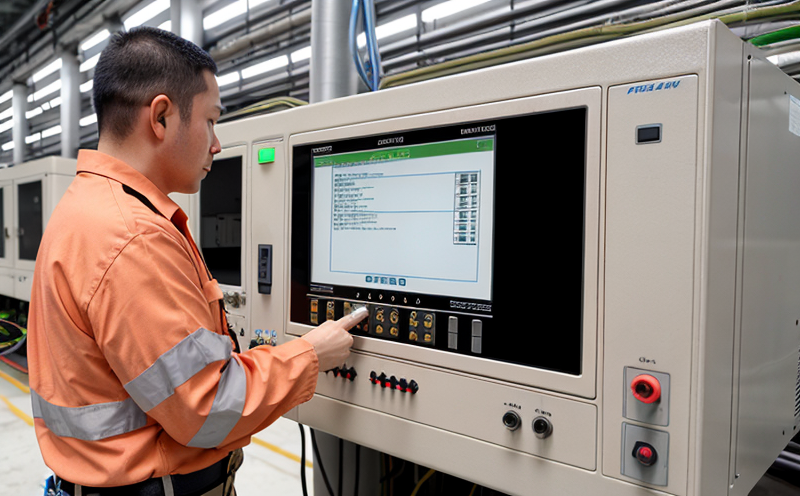PLC control system inspection
The inspection of Programmable Logic Controllers (PLCs) is a critical aspect within the realm of electrical and electronic systems inspection. As part of quality management, compliance officers, R&D engineers, and procurement personnel rely on thorough inspections to ensure that PLCs meet industry standards and perform reliably in their intended environments.
Programmable Logic Controllers are integral components used for automation in various industries such as manufacturing, energy, transportation, and healthcare. These systems control processes through a combination of hardware (PLC itself) and software (programs written by engineers). The inspection process aims to verify that the PLCs function correctly according to their design specifications.
The inspection can be categorized into several key areas: electrical integrity testing, functional verification, performance evaluation under different conditions, and compliance with relevant international standards like IEC 61131-2 for PLC programming languages. Each of these aspects plays a crucial role in ensuring the safety and efficiency of operations.
Electrical Integrity Testing involves checking the continuity, insulation resistance, voltage levels, and current flow within the PLC system to ensure there are no faults that could lead to operational errors or hazards. Functional Verification ensures that all functions defined by the engineers during programming are correctly implemented in hardware. Performance Evaluation assesses how well the PLC operates under various load conditions and environmental factors.
Compliance with standards is essential because it provides assurance that the PLCs meet necessary safety requirements and perform as expected in real-world scenarios. By adhering to these guidelines, manufacturers can ensure their products are reliable and safe for end-users. This not only enhances customer satisfaction but also contributes positively towards meeting regulatory expectations.
The inspection process typically involves detailed documentation of findings along with recommendations for improvement where necessary. It allows stakeholders involved in project management to make informed decisions about necessary modifications or upgrades required before deployment.
Benefits
- Enhanced Reliability: Regular inspections help identify potential issues early on, preventing costly downtime and ensuring continuous operation.
- Better Compliance: Ensures adherence to relevant international standards such as IEC 61131-2, which is vital for maintaining regulatory compliance.
- Increased Efficiency: Identifying inefficiencies early can lead to optimized performance and reduced resource consumption.
- Improved Safety: By detecting hazards promptly, inspections contribute significantly toward safeguarding personnel from injuries or accidents.
Customer Impact and Satisfaction
- Reputation Enhancement: Providing reliable and safe products builds trust among customers, leading to long-term partnerships.
- Prompt Resolution of Issues: Quick identification and resolution of problems reduce dissatisfaction and improve overall service quality.
- Increased Customer Retention: Satisfied clients are more likely to return for future projects or recommend your services to others.
- Positive Regulatory Compliance: Demonstrating adherence to international standards can positively influence customer confidence in the product's reliability and safety.
Environmental and Sustainability Contributions
The inspection of PLC control systems plays a significant role in promoting sustainability within industrial settings. By ensuring that these systems operate efficiently, we can reduce energy consumption, lower emissions, and minimize waste generation.
Achieving optimal performance through regular inspections helps organizations adhere to environmental protection goals set forth by various regulatory bodies worldwide. For instance, adhering to standards like IEC 61508 ensures not only functional safety but also contributes towards reducing unnecessary resource usage.
Furthermore, implementing energy-efficient practices based on inspection findings can lead to substantial savings in operational costs while simultaneously reducing the organization's carbon footprint.





